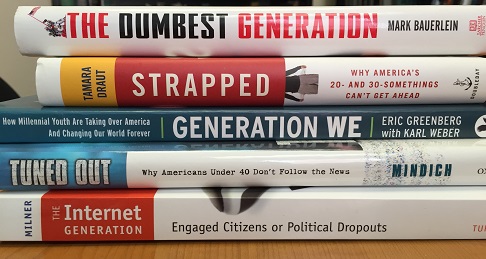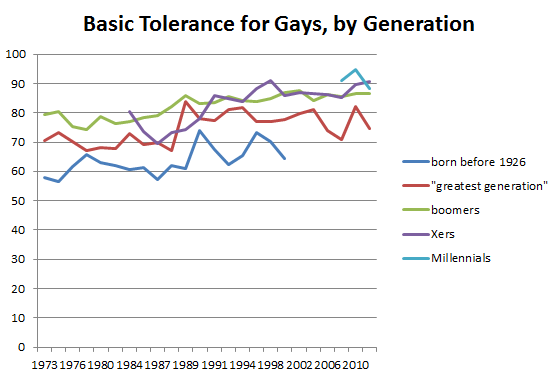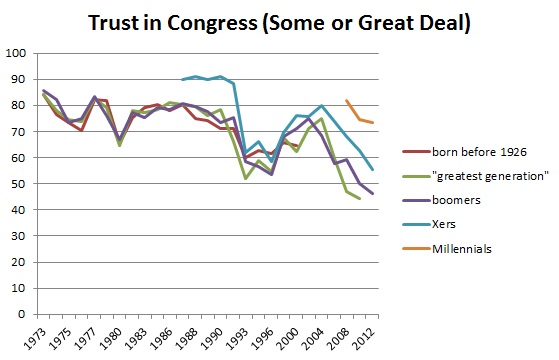We are happy to share the announcement below from NCDD Member Chris Santos-Lang of GRIN Free. Chris’s announcement came via our great Submit-to-Blog Form. Do you have news you want to share with the NCDD network? Just click here to submit your news post for the NCDD Blog!
 What Is Evaluativism?
What Is Evaluativism?
The word “homophobia” was coined in the 1960s to name something that had been occurring for centuries before being named. The word “evaluativism” is an even more recently coined term with an even older history. Much as “racism” and “sexism” refer to discrimination on the basis of race and sex respectively, “evaluativism” refers to discrimination on the basis of cognitive differences known as “evaluative diversity.”
Discrimination against Blacks, Latinos, Asians, and Caucasians all qualify as racism. Likewise, instances of evaluativism include discrimination against creative people, discrimination against subjectivists (i.e., against people who empathize), and discrimination against conservatives. One is often able to find a church, industry, or group in which one’s own evaluative type is privileged, and others in which it is oppressed.
Just as we are still discovering the species and sub-species that make up our biodiversity, we are still in the process of mapping our evaluative diversity. So far, at least four distinct branches of evaluative diversity have been confirmed to exist in both humans and computers; they correspond to well-established branches of moral theory. These four branches have been named with the mnemonic “GRIN”:
Natural Gadfly: Aimed at discovery – guided by creativity
Naturally Relational: Aimed at love – guided by empathy
Naturally Institutional: Aimed at purity – guided by best practices
Natural Negotiator: Aimed at results – guided by research
Although the name is new, evaluativism is not. For example, in the ancient story of Adam and Eve, Adam implied that Eve had a different evaluative nature, and that they would not have eaten the forbidden fruit if her nature had been suppressed (he may have been naturally relational and she a natural negotiator or gadfly). Criticisms of specific evaluative natures are also found in the Quran, Analects, Dhammapada, Tao Te Ching, Bhagavad Gita, and peer-reviewed science.
What’s in a Name?
Lacking a proper name, evaluativism was sometimes called “sexism” in the past. For example, Carol Gilligan’s theory of ethics of care defended the naturally relational from the evaluativism of her academic adviser, Lawrence Kohlberg, but society lacked the terms “naturally relational” and “evaluativism” at the time, so Carol instead claimed to defend “women” from his “sexism”. Modern measures confirm that the naturally relational are significantly more likely to be women, but equating sex with evaluative type perpetuates stereotypes. Similar stereotyping can complicate religionism and the neurodiversity movement. To avoid such stereotyping, evaluativism needs its own name.
The terms “evaluativism” and “evaluativist” derive from the term “evaluative diversity,” which is attributed to a 1961 essay by the philosopher P. F. Strawson. This derivation was made rigorous in a philosophical paper by Hartry Field which argued that evaluative diversity creates intractable disagreements even about matters of fact (such as about the nature of God), so we may as well write-off other people so far as their evaluative type does not match our own. In other words, a successful family reunion unavoidably requires keeping certain topics off-the-table.
The Science
Throughout most of history, racism and sexism were considered part of the natural order, and the same has been true (and may currently be true) of evaluativism. Like homosexuals, people of unprivileged evaluative types used to be considered mentally ill or disabled. More optimistic psychologists classified them as merely immature or ignorant, and proposed methods to educate, reform, or otherwise fix them.
Only recently have scientists begun to show that evaluative nature correlates with genes, brain structure, and type of algorithm. Trying to understand why evaluative diversity persists, they have conducted experiments and developed mathematical models to demonstrate that evaluatively diverse teams are more effective. In other words, evaluativism isn’t just hurtful to victims – it can also be counterproductive for society.
Why would we be hurtful and counterproductive? One reason resembles the reasons why people used to think the Earth was the center of the universe and why white men used to think of women and blacks as property. We have a history of weaving ego-centrism into the culture we pass from generation to generation such that it takes enormous effort and social innovation to escape notions that we are privileged, including the notion that our own evaluative type is the right one. Escaping evaluativism does not require relinquishing belief in right answers, but it does require admitting that we cannot recognize them without diverse help.
The Impact
Evaluativism has plagued humanity for thousands of years and currently produces more segregation in college than both racism and classism. In addition to the personal pain it has brought individual victims (manifesting as depression, apathy, disorientation, and creative block), evaluativism has produced a segregated society with different jobs, political parties, and hobbies for people of different evaluative types. The greatest victims are likely to be people subject to a parent, teacher, clergy, or boss, who feel they must hide their own views to maintain peace with that authority.
Perhaps the worst consequence of evaluativism has been to undermine the design of social institutions. When we succumb to evaluativism, we believe everyone should be of one evaluative type (i.e., our own). This error causes us to design social institutions as though people were interchangeable. For example, we design government in which all kinds of people are to participate in the same way, and we try to create one-size-fits-all justice and moral-education systems.
Unrecognized racism similarly tricked people into designing an economy built on slavery. That economy was temporarily stable, but would have to be reformed eventually. Current designs of government, education, and justice are a similar debt we pass to future generations – eventually, someone will have to pay the price of reforming them to match the denied truth. Meanwhile, their flawed designs cause political polarization, culture wars, and swelling prison populations.
What’s Next?
In the future, awareness of evaluativism will likely increase for the same reasons we have grown aware of speciesism: We could no longer afford to ignore speciesism when mass-production threatened to destroy entire species. Now evaluative diversity is becoming vulnerable to mass-communication, mass-production of decision-support systems, and mass-production of services for behavior control.
Advances in neuroscience, psychology, and sociology are typically at odds with evaluative diversity – aiming instead to increase the effectiveness of marketing, political campaigns, and central control. They will soon enable us to manipulate the sexual orientations and evaluative types of our children through not only genetic screening, but also through brain surgeries and exercises designed to sculpt brains like bodybuilders sculpt muscles. People may someday request brain-jobs to match their nose-jobs. Then lawyers will debate whether it is possible to consent to such procedures freely, and what legitimacy any government can have when its citizens are so oppressed they would want to erase their own natures.
Evaluativism impacts everyone, and most of us every day. Its scope is like that of racism in an economy of slavery. There are currently no laws to regulate it, though at least one famous psychologist has endorsed the extension of mental health definitions for the sole purpose of protecting some evaluative minorities via disability legislation.
In one sense, Hartry Field was wrong that disagreements between evaluative types are intractable – as in conflicts between predator and prey, the resolution is necessarily either that each side loses some of the time or that the ecosystem collapses and all parties lose completely. Evaluative-ecosystem management would involve pruning the winners to protect evaluative diversity. It would be to social health what psychiatry and medicine are to mental and physical health.
Dr. Field seems right only when we ignore the evaluative ecosystem and consider our opinions personal, much as prey who shun predators consider their lives personal. To reject the personal perspective, however, would be evaluativistic. There’s the rub: Unlike racism and sexism, evaluativism is not a phase society can grow out of. It is more like speciesism in that ending speciesism between predator and prey would be even more dangerous than failing to regulate it. What we can grow out of is the phase in which evaluativism is unrecognized. Some forms of discrimination call for more sophisticated management, but all need to be managed.
Chris Santos-Lang is writing the book GRIN Free – GRIN Together: How to let people be themselves (and why you should).


 Kimberly Bain is Senior Partner in Bain Group Consulting, based in Kingston, Ontario, Canada. Kimberly is an IAF Certified Professional Facilitator, is Global Chair of the International Association of Facilitators and holds the appointment of Visiting Scholar in facilitation and mediation at Queen’s University.
Kimberly Bain is Senior Partner in Bain Group Consulting, based in Kingston, Ontario, Canada. Kimberly is an IAF Certified Professional Facilitator, is Global Chair of the International Association of Facilitators and holds the appointment of Visiting Scholar in facilitation and mediation at Queen’s University.


 By all accounts, America is a nation of substance users. More than two-thirds of us are taking at least one prescription drug, and more than half drink alcohol on a regular basis. Marijuana consumption is on the rise as more states relax their laws on its medicinal and recreational use. But even legal substances, when misused, can result in serious problems. Beyond the human suffering, the abuse of legal and illicit substances is costing the nation more than $400 billion dollars each year due to lost productivity, health problems, and crime.
By all accounts, America is a nation of substance users. More than two-thirds of us are taking at least one prescription drug, and more than half drink alcohol on a regular basis. Marijuana consumption is on the rise as more states relax their laws on its medicinal and recreational use. But even legal substances, when misused, can result in serious problems. Beyond the human suffering, the abuse of legal and illicit substances is costing the nation more than $400 billion dollars each year due to lost productivity, health problems, and crime. More about the NIFI Issue Guides
More about the NIFI Issue Guides What Is Evaluativism?
What Is Evaluativism?